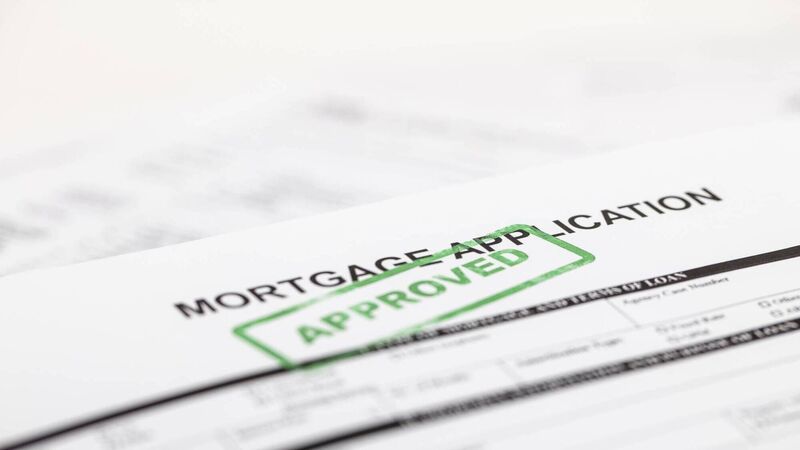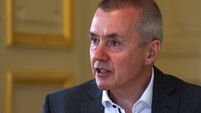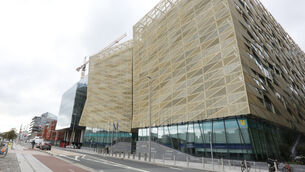Green mortgages on the rise — but it's not always the best rate

Most green mortgages are available to first-time buyers, movers, and switchers alike.
A research note released by the Central Bank last month said that green mortgages, which have been rising in popularity, now account for a third of mortgage lending.
A green mortgage is simply a mortgage that offers a lower interest rate to those who buying a more energy-efficient home.
“In most cases,” says Daragh Cassidy of Bonkers.ie, “to qualify for a green mortgage, you need to be buying a home with a Building Energy Rating (BER) of at least B3 or higher. It usually doesn’t matter if you’re buying a new build or a second-hand home. As long as the property meets the minimum BER requirement, you can avail of the discounted green rate on offer.”
Green mortgages are currently available from AIB, Bank of Ireland, EBS, Haven, and Permanent TSB. The discounts on offer vary.
CLIMATE & SUSTAINABILITY HUB
Bank of Ireland’s green mortgage offers a discount of 0.30% on all its fixed rates options. In AIB, with a loan-to-value rate of between 50% and 80%, you can get a five-year green fixed of 3.75%.
With Permanent TSB, rates on a green five-year fixed term start at 3.95%. You can secure this rate with a loan to value of 60% or lower and a principal of €250,000 or greater.
To take an example:
Suppose you’re borrowing €300,000 from PTSB on a loan to value of between 60% and 80%, and sign up for a five-year fixed term.
The standard fixed rate is 4.25%, which gives a monthly repayment of €1,857.70 and generates a total cost of credit of €137,281.15.
The green five-year fixed rate is 0.2% lower — or 4.05%. It comes with a monthly repayment of €1,825.85 — about €32 less a month, and generates a total cost of credit of €134,135.92.
So over the life of the loan, the green version will cost you just under €3,150 less than the non-green one.
Most green mortgages are available to first-time buyers, movers, and switchers alike, as well as those building their own homes. In most cases, if you make energy efficiency improvements to your home which upgrade it to a BER of B3 or higher, you can also avail of a green rate from your existing lender.
Daragh Cassidy points out that there’s an element of greenwashing in these mortgage products. Greenwashing is a form of spin in which PR and marketing strategies are deceptively used by corporations to persuade the public that their products, aims and policies are environmentally friendly.
“A green mortgage doesn’t refer to some type of loan that’s backed by environmental initiatives or carbon offsetting schemes for example, though that’s not to say some lenders aren’t separately engaging in initiatives like these.
"Some lenders will argue that by offering green mortgages they’re incentivising people to buy more energy-efficient homes, which means they’ll use less energy and have a lower carbon footprint, which is all great for the environment of course. But by law all homes built since 2019 need to be A2 rated anyway. So these homes would be built anyway.”
“A green mortgage doesn't really do anything in and of itself to help the environment. It could help put some money back into your pocket — and there’s nothing wrong with that of course! — but if you want to help save the planet you’ll need to do more.”
If your budget can stretch to a home with a higher BER, or you've recently made energy efficiency improvements to your home, then, of course, you should consider a green mortgage.
However, be mindful that cheaper, non-green rates may actually be available from other lenders depending on the size of your deposit or mortgage.
Trevor Grant is chairperson of the Association of Irish Mortgage Advisors (AIMA). He agrees that green mortgages can be hugely valuable to those buying or building energy-efficient homes.
"Some of the cheapest mortgages out there are green mortgages, particularly if fixing your mortgage," he says.
"You may be able to secure a cheaper mortgage elsewhere even if the lender isn’t specifically offering a green home loan. It’s always important to shop around or hire a mortgage broker so that you get the best mortgage deal.”
He points out too that you must usually fix your mortgage to get a discounted green rate, and that this may not suit you if you’d prefer to go the variable route or if you’re planning to sell your home within a few years.
“We believe green mortgages should be more universally available and would encourage all lenders to offer green rate options on all mortgage products, irrespective of the mortgage being fixed or variable, and regardless too of the term of the fixed rate.”
The Central Bank note shows that first-time buyers are one of the cohorts most likely to avail of green mortgages.
It also points out that green mortgage borrowers have higher incomes, larger mortgages and buy higher-value properties.
Many first-time buyers could therefore lose out on green mortgages because it is only those with the budget to buy the typically more expensive modern and energy-efficient homes that qualify for a discounted green mortgage.
“There are a cohort of first-time buyers,” says Mr Grant, “who can only afford to buy older and less energy-efficient properties.
Meanwhile, the Central Bank revealed last week that Irish mortgage rates resumed their upward trend in March, and are now at their highest level since mid-2017.
The average interest rate on a new mortgage in March was 3.54%, a significant jump from 2.92% in February. Rates in Ireland increased far more than in any other Eurozone country.
Despite this, Ireland still has among the lowest mortgage rates in the eurozone, for now at least, with only France and Malta having lower rates.
“Since last July,” says Daragh Cassidy, “the ECB has hiked rates by 3.75 percentage points. However, the main banks have only hiked their fixed rates by around 1.5 to 2 percentage points on average. And variable rates have hardly moved at all.”
Prospective mortgage holders and those on trackers in particular are being warned that the medium-term outlook is for rates to go much higher over the coming months.
“The ECB is likely to hike its main lending rate, off which trackers and mortgage rates are priced, to 4% when it next meets in June, and it’ll probably hit 4.25% by the end of the summer.
"This means the average tracker customer will soon be paying a rate of around 5.5% while the best rate available to prospective first-time buyers will be similar.”













